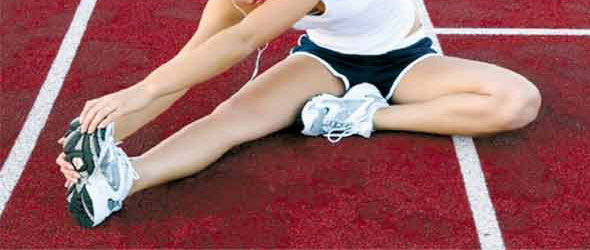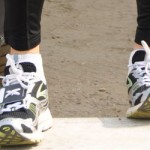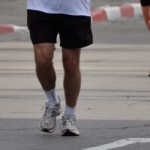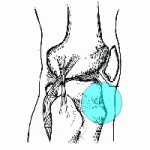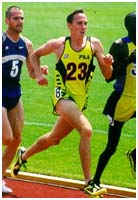Musculoskeletal imbalances
Any breakdown in the effective function of the legs and pelvis during running may predispose to injury. Examples include:
- postural changes due to muscle tightness
- lumbar or sacro-iliac joint stiffness
- poor co-ordination of movement or early fatigue associated with muscle weakness
- leg length discrepancy (LLD) which will affect pelvic motion and stride length. Note: LLD < 1.5 cm is usually not significant
- prolonged or delayed pronation or supination of the foot, which will alter the function of the leg and pelvis during the running cycle
Poor muscular co-ordination
Running requires strength, power, endurance and co-ordination. Problem-free running cannot take place if the hamstrings are weak, inflexible, or if there is poor neuromuscular co-ordination. Loss of the normal ratio of muscle power between the quadriceps and hamstrings may also occur. The normal quadriceps/hamstrings ratio is 60:40. Loss of the normal ratio may be due to excessive development of the quadriceps, or due to existing weakness of the hamstrings. A normal ratio is essential to prevent imbalances from occurring during the running cycle.
Inappropriate training
“Inappropriate” comprises all the factors that may affect your body’s ability to adapt to the varied stresses of running. Factors include:
- excessive mileage
- rapid increase in mileage
- inadequate warm-up and cool-down
- poor stretching
- cambered running surfaces
- worn shoes or orthotics
Fatigue
Fatigue affects performance and may predispose you to injury. At a physiological level, fatigue may be reflected in a prolonged recovery time at neuromuscular junctions, which diminishes effective muscle activation, slows the clearing of metabolites from the muscle, and impairs the ability of the muscle to contract. Fatigue therefore results in decreased strength, power and endurance, and will increase the risk of injury.
Incomplete rehabilitation
As runners, we are always eager to get back on the road as soon as possible. If an injury is not properly treated, or if you do not achieve your pre-injury levels of strength, endurance and flexibility, the risk of re-injury is increased. Effective rehabilitation (which means putting in the time with the physio, or at the gym) will allow you to get back on the road and stay there.
Repeated micro-trauma
Often trauma to the hamstrings may not always be significant enough to cause pain or disability at the time of injury, and therefore may not initially impair your running performance. The reduction in hamstring function may be so gradual that it will not be detected until there is a serious problem. This is often described as “the last straw that broke the camel’s back”, where repeated micro-trauma will finally result in pain and dysfunction. When running, the hamstrings are often exposed to repeated micro-trauma due to over-striding, as well as with a change of pace. Over-striding, particularly when just starting to run downhill, places the hamstrings under excessive eccentric load as the muscle works to stabilise the knee joint. The excessive eccentric load may result in micro-trauma to the muscle fibres, leading to injury.
View the articles relating to the hamstring:

















